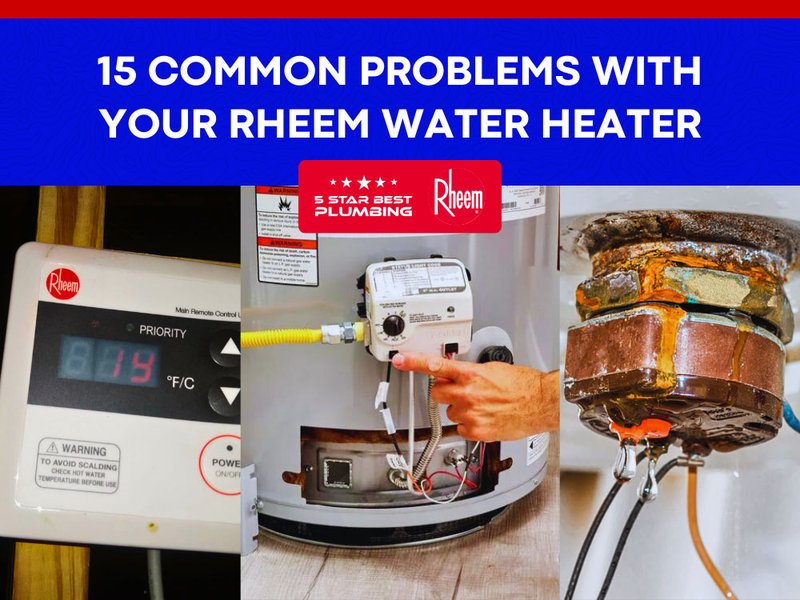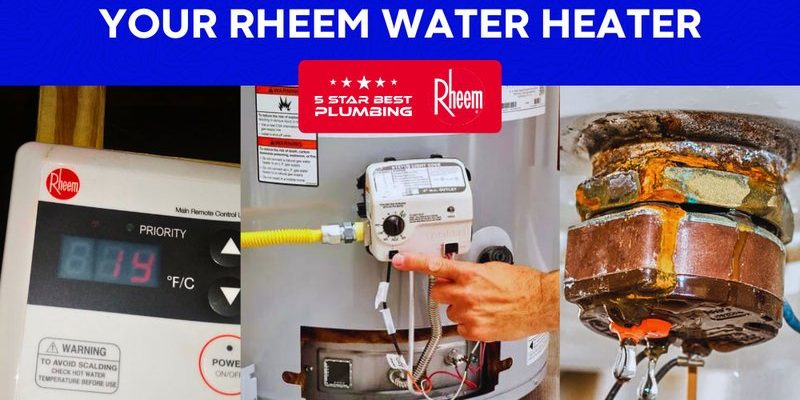
Now, you might be wondering, “What exactly does an E2 error mean?” In simple terms, it’s your water heater’s way of telling you there’s an issue with the temperature sensor. Imagine trying to cook your favorite dish without a thermometer. Just like you need to know the right temperature to make sure your meal isn’t overcooked or raw, the water heater relies on its temperature sensor to ensure the water is just the right warmth for you. When this sensor isn’t working correctly, the heater can’t gauge how hot the water is, which triggers the E2 error.
Understanding the Temperature Sensor in Your Water Heater
The temperature sensor in your Rheem water heater is a crucial part that helps maintain the water at the perfect temperature. Think of it as the thermostat in your home. Just as it regulates your home’s temperature by communicating with your heating and cooling system, the temperature sensor keeps tabs on how hot or cold the water should be. When it senses a problem, it sounds the alarm, much like a smoke detector going off in a kitchen with burnt toast.
So, what makes this sensor so important, and how does it work? The temperature sensor is typically a small probe or device that continuously measures the water’s heat levels. It sends this information back to the water heater’s control board, which then decides whether to heat up the water more, maintain the current temperature, or let it cool. If the sensor isn’t accurately reading the temperature, it can trigger an E2 error code, indicating that you need to pay attention and get this fixed.
Now, if you’re scratching your head and wondering how this small part can cause such a big fuss, think about driving a car without a speedometer. You can keep driving, but you wouldn’t know if you’re going too fast or too slow. The sensor acts like that speedometer, giving the heater precise readings for optimal operation.
What Causes the E2 Error Code?
Okay, so the temperature sensor’s not working right — you got that. But why? Several factors can cause this, like wear and tear over time. It’s like a pair of sneakers you’ve worn every day for years. Eventually, they’ll start showing signs of age. Similarly, as years go by, components of your water heater can degrade, leading to errors like the E2.
Another common culprit is a loose connection. Imagine trying to watch TV when your remote batteries are about to die. The sensor needs a strong connection to communicate with the water heater’s control board. If it’s loose or corroded, it’s like trying to have a conversation over a poor cell phone signal — frustrating and ineffective. In many cases, the solution might be as simple as tightening the connections or cleaning off some rust or debris.
Sometimes, it’s not the sensor itself but external issues affecting its performance. High mineral content in water or sediment build-up can insulate the sensor, making it difficult to get accurate readings. Imagine trying to see through dirty glasses — everything’s a blur. Similarly, sediment on the sensor can obstruct its view of the actual water temperature.
Fixing the E2 Error: Next Steps
So, what should you do when confronted with the E2 error code? First, don’t panic! Often, this error doesn’t mean you need to replace your entire water heater. Start by turning off the water heater and disconnecting the power. This provides a safe environment to work in. After that, inspect the temperature sensor for any obvious damage or loose connections. Tightening a few screws or wiping away some dust might be all it takes to remedy the situation.
If the connections look good, consider checking the water for excessive sediment. Draining and flushing your water heater annually can help prevent this build-up and keep your system in top shape. It’s a bit like clearing out the gutters of your house — necessary and useful.
Lastly, if everything seems in order but the error persists, it might be time to consult a professional. Sometimes, the underlying issue requires an expert’s eye and experience. They can diagnose and fix the problem, ensuring your water heater is back to providing those precious hot showers in no time.
Preventing Future E2 Errors
Let’s talk about prevention because, as the saying goes, “An ounce of prevention is worth a pound of cure.” Regular maintenance can greatly reduce the chances of encountering that pesky E2 error code again. By scheduling routine check-ups with a qualified technician, you ensure that all components, including the temperature sensor, are functioning correctly.
One simple habit to adopt is regular flushing of the water heater to remove sediment. Just like you wouldn’t wait years to clean out your fridge, your water heater benefits from a good flush every now and then. This practice keeps the sensor from getting covered and ensures it can accurately measure the water temperature.
Also, be aware of the water quality in your home. Hard water can lead to mineral deposits, not just in your water heater but throughout your plumbing. Considering a water softener could be a worthwhile investment. It’s akin to putting a filter on your faucet — it provides cleaner, more manageable water before it even reaches the heater.
Incorporating these steps in your routine can extend the life of your water heater, reduce the risk of errors, and save you from unexpected cold showers. Remember, a little attention now can save a lot of hassle later. So keep your water heater humming along happily, and those hot showers will keep rolling in.
